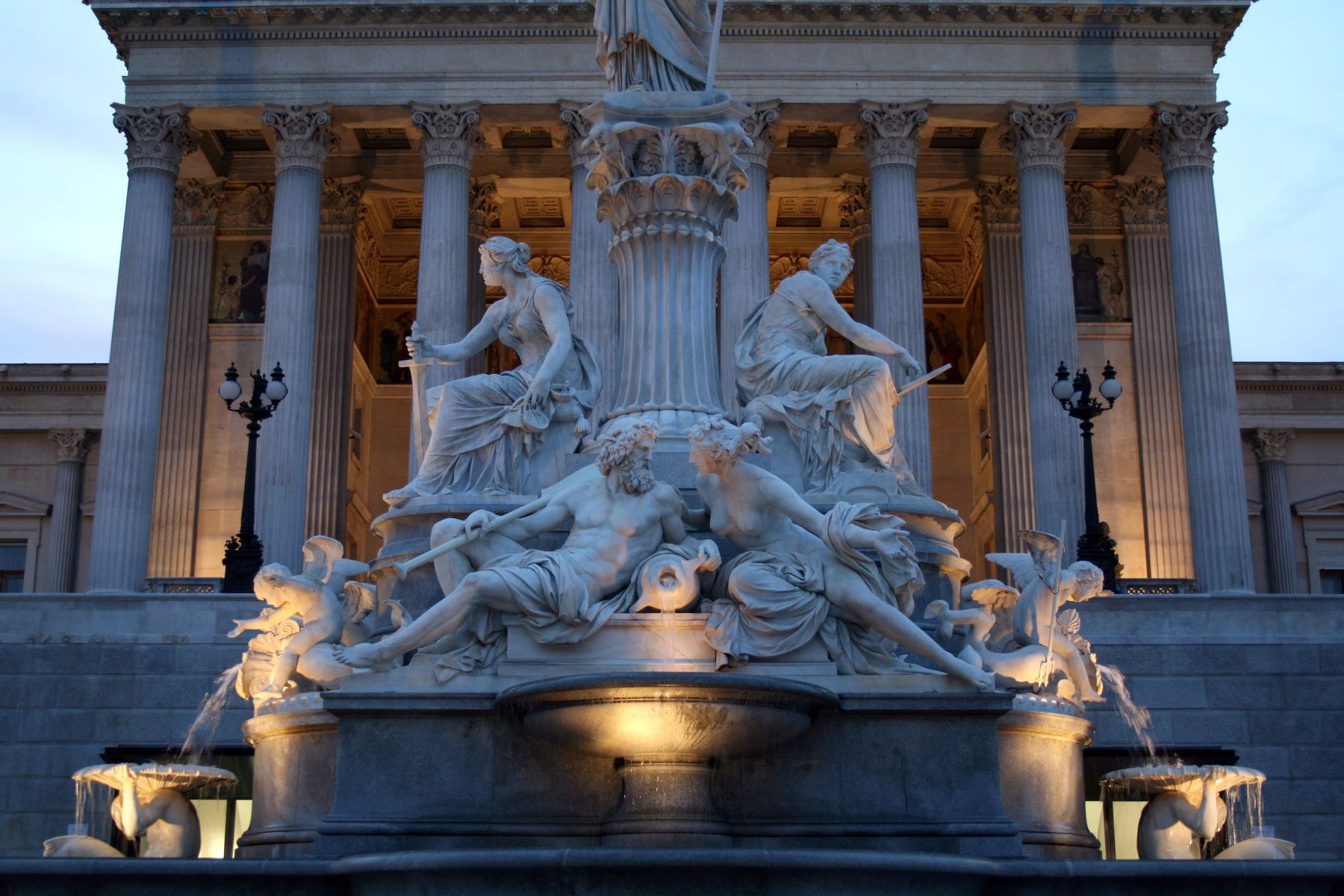
The Pallas-Athene Fountain is a mesmerizing landmark that captivates both locals and tourists alike. Located in the heart of Athens, Greece, this stunning masterpiece is not just a fountain, but a symbol of beauty, art, and history. Built in 1898, the Pallas-Athene Fountain stands as a testament to the rich cultural heritage of the city.
But beyond its breathtaking aesthetics, the Pallas-Athene Fountain holds a treasure trove of fascinating facts that will leave you astounded. From the mythological connections to its intricate design, there’s much to learn and appreciate about this iconic landmark. So, get ready to delve into the world of the Pallas-Athene Fountain as we uncover 14 mind-blowing facts that will enhance your understanding and appreciation of this architectural marvel.
Key Takeaways:
- The Pallas-Athene Fountain in Athens, Greece, is a stunning symbol of classical architecture, featuring intricate sculptures and a majestic statue of the goddess Athena, drawing tourists and inspiring artists and writers.
- Restored in 1972, the fountain continues to inspire unity and national pride, hosting cultural events and illuminating the night with its captivating lights, making it a must-visit landmark in Athens.
An Iconic Symbol of Classical Architecture
The Pallas-Athene Fountain is an iconic symbol of classical architecture located in the heart of Athens, Greece. It represents the goddess Athena, the city’s patron deity, and is a magnificent sight to behold.
Commissioned by King Otto of Greece
The fountain was commissioned by King Otto of Greece in 1842 as a tribute to the city’s rich history and cultural heritage. It stands as a testament to the artistic and architectural prowess of the time.
Designed by Leon von Klenze
The Pallas-Athene Fountain was designed by the renowned German architect, Leon von Klenze. His vision and talent brought this masterpiece to life, showcasing his mastery of neoclassical style.
Depiction of the Goddess Athena
The fountain prominently features a majestic statue of the goddess Athena, symbolizing wisdom, courage, and war. She stands tall, holding a spear and wearing a helmet, exuding power and grace.
Intricate Sculptural Details
The Pallas-Athene Fountain is adorned with intricate sculptural details, depicting various mythological figures and scenes. Each sculpture tells a story, adding depth and meaning to the overall design.
Water Flows from Multiple Sources
Water flows from multiple sources within the fountain, creating a mesmerizing display of cascading waterfalls. The soothing sound of water adds to the enchanting ambiance of the surroundings.
A Tourist Attraction
The Pallas-Athene Fountain is a popular tourist attraction, drawing visitors from around the world who marvel at its beauty and historical significance. It has become an iconic landmark of Athens.
Restored to its Former Glory
In 1972, the Pallas-Athene Fountain underwent a meticulous restoration to preserve its grandeur and ensure its longevity. The restoration efforts have ensured that future generations can continue to admire this architectural masterpiece.
Inspiring Image in Art and Literature
The Pallas-Athene Fountain has been a source of inspiration for artists and writers throughout history. Its timeless beauty and symbolic significance have been depicted in various paintings, poems, and novels.
Hosts Cultural Events and Performances
The area surrounding the Pallas-Athene Fountain often serves as a venue for cultural events and performances. Visitors can enjoy concerts, theatrical shows, and other artistic displays against the backdrop of this magnificent monument.
A Symbol of Unity
The Pallas-Athene Fountain has long been regarded as a symbol of unity and national pride. It represents the resilience and strength of the Greek people, reminding them of their rich heritage and shared identity.
Illuminated Beauty at Night
When night falls, the Pallas-Athene Fountain is bathed in a captivating array of lights, transforming it into a breathtaking spectacle. The illuminated beauty of the fountain adds an extra layer of charm to its already awe-inspiring presence.
Central Location in Athens
The Pallas-Athene Fountain is strategically located in Syntagma Square, one of the central hubs of Athens. Its prominent position ensures that it is easily accessible to both locals and tourists, making it a must-visit attraction.
Continues to Inspire
The Pallas-Athene Fountain continues to inspire awe and admiration among all who encounter it. Its timeless elegance and rich symbolism make it a true masterpiece of art and architecture, representing the spirit of Athens for generations to come.
Conclusion
The Pallas-Athene Fountain is an extraordinary landmark that captivates visitors with its rich history and stunning beauty. From its origins in Greek mythology to its enduring symbolism of wisdom and power, this iconic fountain continues to be a must-visit destination for tourists and locals alike.With its incredible statues depicting the goddess Athena and other mythical creatures, the Pallas-Athene Fountain stands as a testament to the artistic prowess of its creators. The intricate details and impressive craftsmanship make it a true masterpiece of sculpture and design.Whether you’re a history enthusiast, an art lover, or simply someone looking to experience the magic of Vienna, discovering the Pallas-Athene Fountain is an experience not to be missed. Its grandeur and significance will leave you in awe and make your visit to Vienna all the more memorable.
FAQs
1. What is the Pallas-Athene Fountain and where is it located?
The Pallas-Athene Fountain is a landmark fountain located in Vienna, Austria. It is situated in front of the Austrian Parliament Building, making it easily accessible for tourists and locals alike.
2. What is the significance of the statues in the Pallas-Athene Fountain?
The statues in the Pallas-Athene Fountain represent various mythological figures, with the central statue depicting the goddess Athena. These statues symbolize wisdom, power, and the rich cultural heritage of Vienna.
3. Can visitors get close to the Pallas-Athene Fountain?
Yes, visitors can get up close to the Pallas-Athene Fountain and admire its beauty from a close distance. However, climbing or touching the statues is not allowed to preserve their integrity and protect them from damage.
4. Are there any guided tours available for the Pallas-Athene Fountain?
While there may not be specific guided tours exclusively for the Pallas-Athene Fountain, many general sightseeing tours of Vienna include a stop at this iconic landmark. These tours often provide interesting insights and historical context about the fountain.
5. Are there any nearby attractions to visit after seeing the Pallas-Athene Fountain?
Absolutely! The Pallas-Athene Fountain is located in the heart of Vienna, surrounded by other famous landmarks and attractions. Nearby sights include the Vienna City Hall, Burgtheater, and the Museumsquartier, providing plenty of options for further exploration.
Exploring the captivating world of iconic fountains and monuments, such as the Pallas-Athene Fountain, reveals a treasure trove of fascinating facts and stories. For those intrigued by public art, the Sibelius Monument offers another compelling example of how sculptures and structures can become integral parts of a city's cultural landscape. Uncover the secrets behind these remarkable creations and gain a deeper appreciation for the artistry and history that shaped them.
Was this page helpful?
Our commitment to delivering trustworthy and engaging content is at the heart of what we do. Each fact on our site is contributed by real users like you, bringing a wealth of diverse insights and information. To ensure the highest standards of accuracy and reliability, our dedicated editors meticulously review each submission. This process guarantees that the facts we share are not only fascinating but also credible. Trust in our commitment to quality and authenticity as you explore and learn with us.


